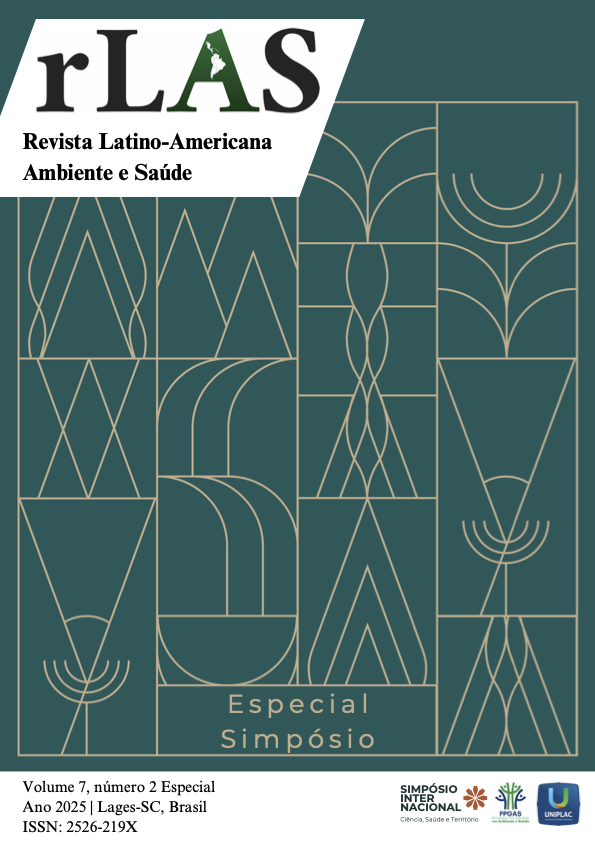Systematization of biosafety in the dilution of chemotherapeutics in veterinary clinics and hospitals
Keywords:
Biosafity, Chemotherapeutic Agents, Veterinary MedicineAbstract
Veterinary clinics and hospitals have reported a significant increase in oncological care and use of chemotherapeutic agents in small animals, demanding greater attention to biosafety. The increased life expectancy of animals contributes to the development of neoplasms, leading to more frequent use of antineoplastic drugs. However, these substances are often handled without proper adherence to safety standards, exposing professionals to occupational risks. This study aimed to systematize safe practices for the dilution of chemotherapeutic agents in veterinary environments. A qualitative-descriptive integrative literature review was conducted using the databases Latin American and Caribbean Health Sciences Literature (LILACS) and Medical Literature Analysis and Retrieval System Online (MEDLINE), in addition to technical manuals and books. The inclusion criteria considered full articles published between 2011 and 2021. The results indicated a lack of veterinary-specific studies, with a predominance of research from the human health field. Of the eight articles initially selected, only three were related to veterinary practice, requiring additional sources. In conclusion, there is a gap in literature regarding biosafety in veterinary oncology, highlighting the need for more research and trained professionals to properly handle chemotherapeutic agents and to prevent occupational exposure.
References
ALMEIDA, V. L. et al. Câncer e agentes antineoplásicos ciclo-celular específico e ciclo–celular não específico que interagem com o DNA: uma introdução. Química Nova, v. 28, n. 1, p. 118-129, 2005.
BBRAUN. Chemo Mini Spike – Sistema fechado para reconstituição segura. Disponível em: https://www.bbraun.com.br/pt/products/b14/mini-spike-chemo.html. Acesso em: 10 dez. 2021.
BORGES, G. G.; SILVINO, Z. R. Manual de boas práticas: exposição ao risco químico na central de quimioterapia – conceitos e deveres. Rio de Janeiro: INCA, 2015.
BOSSANA, E. M. A.; GATO, M. I. R. Terapêutica oncológica para enfermeiros e farmacêuticos. Rio de Janeiro: Atheneu, 2012.
BRASIL. Ministério do Trabalho e Emprego. Portaria nº 485, de 11 de novembro de 2005. Aprova a Norma Regulamentadora nº 32. Diário Oficial da União: seção 1, Brasília, DF, 2005.
BULHÕES, I. Riscos do trabalho em enfermagem. Rio de Janeiro: Folha Carioca, 1998.
FERREIRA, L. L.; NARDI, A. B. Oncologia veterinária: princípios e aplicações. 2. ed. Rio de Janeiro: MedVet, 2021.
HELLER, R.; GILBERT, R.; JAROSZESKI, M. Electron-Chemotherapy: an emerging drug delivery method for the treatment of cancer. Advanced Drug Delivery Reviews, v. 26, n. 1-3, p. 185–197, 1997.
INSTITUTO NACIONAL DE CÂNCER JOSÉ ALENCAR GOMES DA SILVA (INCA). Segurança no manuseio de medicamentos antineoplásicos. Rio de Janeiro: INCA, 2018. Disponível em: https://www.inca.gov.br/publicacoes/livros/seguranca-no-manuseio-de-medicamentos-antineoplasicos. Acesso em: 01 nov 2021.
KLAHN, C. J. Occupational exposure to antineoplastic agents in veterinary medicine. Veterinary and Comparative Oncology, v. 12, n. 2, p. 89–98, 2014.
MANCINI, M. et al. Biossegurança: uma abordagem multidisciplinar. In: PELICIONI, M. C. F. (org.). Saúde ambiental: uma abordagem integrada. São Paulo: Manole, 2008. p. 267–284.
NIOSH. National Institute for Occupational Safety and Health. Preventing occupational exposures to antineoplastic and other hazardous drugs in health care settings. Cincinnati: Department of Health and Human Services, 2004. Disponível em: http://www.cdc.gov/niosh/docs/2004-165. Acesso em: 01 nov. 2021.
NIOSH. National Institute for Occupational Safety and Health. Safe handling of hazardous drugs for veterinary healthcare workers. Cincinnati: DHHS, 2010. Disponível em: http://www.cdc.gov/niosh/docs/wp-solutions/2010-150. Acesso em: 01 nov. 2021.
NBR 7256. Tratamento de ar em estabelecimentos assistenciais de saúde (EAS). Rio de Janeiro: Associação Brasileira de Normas Técnicas, 2005.
OSHA. Occupational Safety and Health Administration. Controlling Occupational Exposure to Hazardous Drugs. 2016. Disponível em: http://www.osha.gov/SLTC/hazardousdrugs/controlling_occex_hazardousdrugs.html. Acesso em: 01 ago. 2021.
PORTARIA SMS nº 641, de 9 de abril de 2016. Regulamento técnico sobre as condições higiênico-sanitárias e boas práticas para estabelecimentos e serviços médicos veterinários.
RESOLUÇÃO DA DIRETORIA COLEGIADA – RDC nº 220, de 21 de setembro de 2004. Regulamento técnico de funcionamento para serviços de terapia antineoplásica. Brasília, DF: ANVISA, 2004.
RESOLUÇÃO DA DIRETORIA COLEGIADA – RDC nº 222, de 28 de março de 2018. Regulamento sobre o gerenciamento de resíduos de serviços de saúde. Brasília, DF: ANVISA, 2018.
ROBAZZI, M. L. C. C.; MARZIALI, M. E. P. Exposição ocupacional a agentes químicos antineoplásicos: uma revisão. Revista Brasileira de Saúde Ocupacional, São Paulo, v. 29, n. 109, p. 79-89, 2004.
SENNA, M. H. et al. Segurança do trabalhador na manipulação de antineoplásicos. Avances en Enfermería, Bogotá, v. 31, n. 1, p. 141–158, 2013.
SMITH, J. S. et al. Occupational exposure to hazardous drugs in veterinary oncology. Veterinary and Comparative Oncology, v. 16, n. 3, p. 435–443, 2018.


